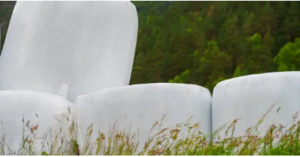Australia’s agricultural industry is as diverse and vast as the continent itself. From the arid outback to the fertile plains, farmers across the country face unique challenges in providing nourishment for their livestock. Among the innovations transforming the way Australian farmers manage their feed is commercial silage wrap. This article aims to delve into the profound impact of commercial silage wrap on Australian farms, exploring its benefits, challenges, and implications for sustainable agriculture in the land down under.
 Evolution of Silage Wrap Technology:
Evolution of Silage Wrap Technology:
Fodder, the process of fermenting and storing high-moisture forage, has long been integral to livestock farming. Historically, farmers used labour-intensive methods like pit silos or trench silos to preserve feed, which were often susceptible to spoilage and weather conditions. The introduction of commercial silage wrap revolutionised this practice. Made from polyethylene plastic, this wrap forms an airtight seal around bales of forage, creating optimal conditions for fermentation and preserving the nutritional integrity of the feed.
Benefits of Commercial Silage Wrap:
The adoption of commercial silage wrap has brought about a multitude of benefits for Australian farmers. Firstly, it extends the shelf life of silage, enabling farmers to store feed for extended periods without spoilage. It is particularly advantageous in regions prone to drought or unpredictable weather patterns, where securing a reliable supply of quality feed is essential for livestock health and productivity.
Additionally, commercial silage wrap enhances operational efficiency on farms. It allows farmers to harvest and store forage at optimal moisture levels, reducing the risk of nutrient loss and ensuring consistent feed quality throughout the year. Moreover, by minimising waste and improving feed utilisation, silage wrap helps farmers maximise their resources and minimise costs associated with feed procurement.
Environmental Considerations:
While the benefits of commercial silage wrap are undeniable, concerns about its environmental impact have been raised. The use of plastic materials raises questions about sustainability and waste management. However, recent advancements in biodegradable and compostable wrap options offer promising alternatives for environmentally conscious farmers.
Challenges and Solutions:
Despite its advantages, the adoption of commercial silage wrap poses certain challenges for Australian farmers. The initial investment in equipment and materials can be significant, particularly for small-scale or resource-limited operations. Additionally, proper storage and handling practices are essential to maximise the efficacy of silage wrap and prevent contamination or damage.
In addressing these challenges, various support mechanisms are available to farmers. Government subsidies, grants, and agricultural extension programs help offset the cost of equipment and provide education on best practices for silage production and storage. Moreover, collaboration between researchers, manufacturers, and farmers is driving ongoing innovation in silage wrap technology, leading to improvements in performance, efficiency, and environmental sustainability.
Future Outlook:
As Australian agriculture continues to evolve in response to changing climatic, economic, and regulatory pressures, the role of commercial silage wrap is poised to expand further. Technological advancements, such as biodegradable materials and automated wrapping systems, promise to enhance the sustainability and efficiency of silage production on farms.
Moreover, increasing consumer demand for ethically sourced and environmentally sustainable food products is likely to drive further adoption of silage wrap among livestock producers. By providing a reliable and cost-effective means of preserving feed, commercial silage wrap enables farmers to meet these evolving market demands while maintaining profitability and environmental stewardship.
Commercial silage wrap has emerged as a transformative technology in Australian agriculture, offering farmers a reliable solution to preserve and store feed for their livestock. While challenges exist, ongoing innovation and support initiatives are driving widespread adoption and continuous improvement in silage wrap technology. As the agricultural sector strives towards greater sustainability and resilience, commercial silage wrap will remain a cornerstone of feed management practices on Australian farms, supporting the productivity, profitability, and environmental integrity of the industry for years to come.
Amid Australia’s vast agricultural landscape, protecting harvested crops is key to ensuring quality and sustainability. In the case of silage wrap, a UV protection layer helps preserve nutrient-rich forage, boosting farm productivity and enabling sustainable farming practices.